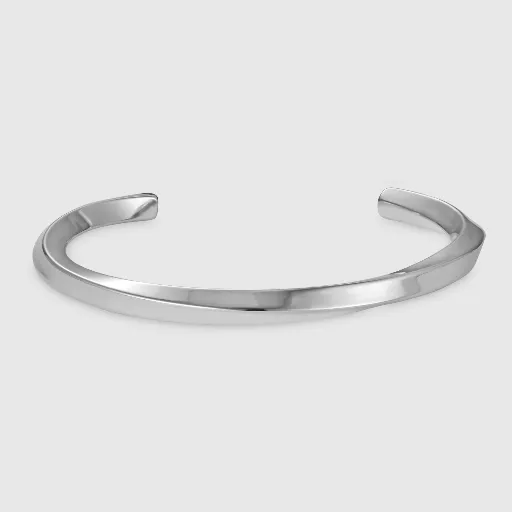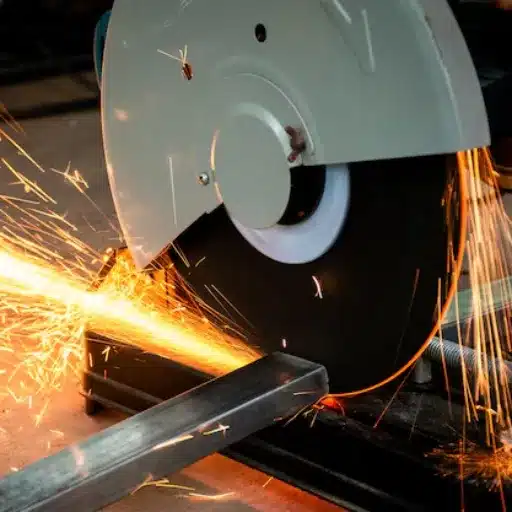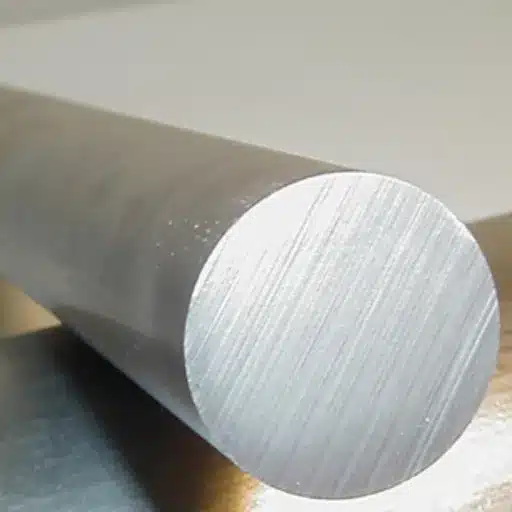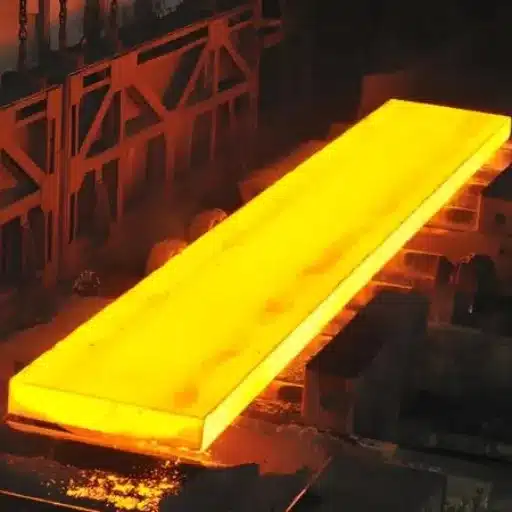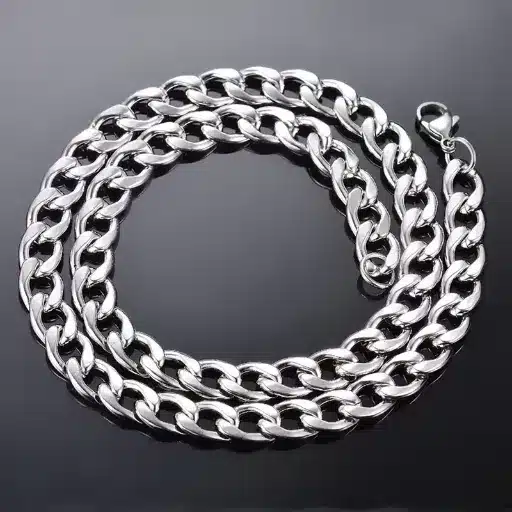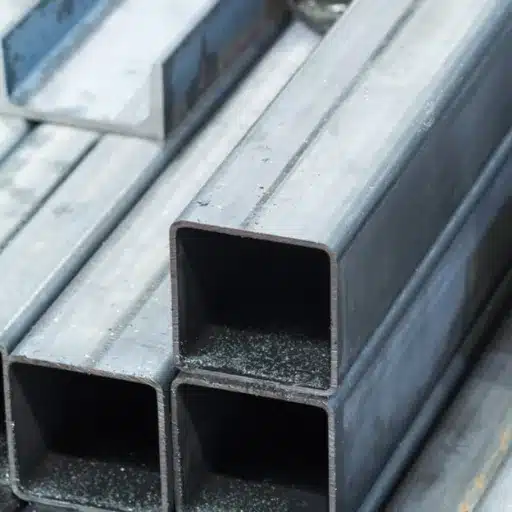Steel is the principal material for modern society; it is the phenomenon that shapes all the industries worldwide and continues to do so. For instance, steel, besides any other material, provides the foundation upon which skyscrapers are built, bridges that withstand the forces of nature over time, and also bridges people together. The core of this marvelous material is structural steel: a form of steel explicitly intended for construction purposes. This article will delve into the universe of steel, particularly structural steel, looking at its components, characteristics, and fabulous functional role in various settings. Industry practitioners in steel, overview, and current nostalgic users may find this write-up informative about the importance steel has played and will play in the future.
Understanding Steel
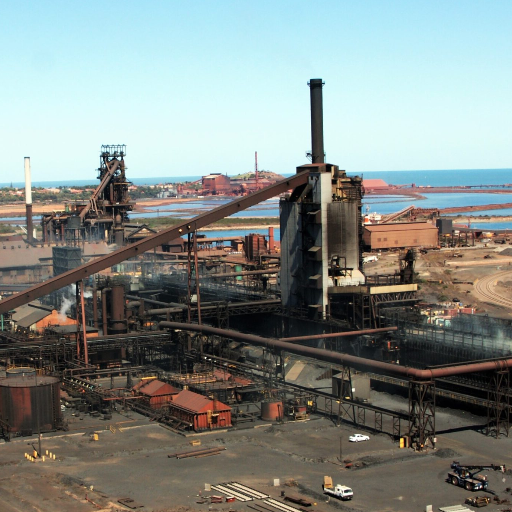
The steel overview is incomplete without accounting for the carburizing if an element in the questioned material is introduced into the iron-carbon alloy. Classically, the carbon content does not exceed 2% or less than 0,02% during carburization. The material has a mixed strength, stiffness, and toughness, as well as the capability of handling materials, figures, etc. It is a basic material used in construction, manufacturing, and engineering. Other elements, such as manganese, chromium, nickel, etc., can also be added to the steels to obtain particular improvements, starting with an increase in corrosion resistance or hardness. There is nothing like steel for its malleability, and as such, it is used in everything from construction to tools to machinery, one of the black and most essential materials in our world.
What is Steel?
People worldwide have used the ever-reliable steel’s basic properties since they learned how to extract iron, and manipulating simple structures has been an ongoing challenge for many societies worldwide.
History of Steel Production
Steel has been produced for over 4,000 years, and early iron work can be seen in Mesopotamia and Egypt. Although the manufacture of implements and weapons from iron was widely used, early blacksmiths could not make genuine steel as they had serious technological deficiencies that made this unachievable. The historical development of cementation is usually where historians start to talk about how steel was made. In the process, it was stated that wrought iron was heated over charcoal. The carbon within the charcoal would diffuse into the heated wrought iron; as a result, the hardened iron structures could be made into steel.
Steel production dramatically changed with the 18th and 19th-century Industrial Revolution. The most significant was the introduction of the Bessemer Process in 1856, which had never been used in steel making. In fact, air was blown through hot metal to purge impurities. This development allowed for savings to be made, which allowed for extensive use of steel in railway building and the construction of ships, previously out of economic reach.
Presently, the production of steel has been highly improved by reducing it to a single and straightforward process. The basic oxygen steelmaking, BOS, is 70 percent of all steel production in the world, and it takes place at high speed and with insufficient energy. In addition, using EAF to process new steel from entirely or in part old steel scrap is especially appealing to the steel industry. According to the reports created by World Steel Association, the crude steel production worldwide in 2022 was 1,878 million metric tons due to the high demand for steel in the construction, automotive and energy industries.
The man ahead challenges and opportunities steel overview somehow, the way it happens for the graphite. These challenges are also helpful in achieving global climate change mitigation targets.
Characteristics and Properties of Steel
The fantastic property of steel, overview, it looks like it has eliminated almost all physical competence. The following is a list of 5 features of the steel agent that makes it indispensable.
- Resilience
Steel is very strong and resistant to stretching, which makes it ideal for architectural and infrastructure development. For instance, the strength of typical structural steel ranges between 36,000 psi and more than 100,000 psi, depending on the grade and addition of alloying elements.
- Endurance
Steel is famous for its durability and capability to retain its shape and utility even in rigorous circumstances. Its resistance to breakage and deformation qualifies it for harsh environments like building bridges or ensuring heavy equipment is in place.
- Malleability and Ductility
Steel. Many types of steel are straightforward to bend and roll, sometimes to fragile metallic sheets, without any stress on cracking the material. These processes include drawing into rods or wires, or moving or deep drawing as in car body production.
- This steel does not rust easily.
Some other types, like stainless steel, are fabricated to resist openings. Elements such as chromium (at least 10.5%) can solve such problems, as this creates corrosion–resistant barriers, which help prolong the product’s service period in humid and other aggressive environments.
- Transfer and dissipation of heat
Steel’s property allows quick movement of heat and even sustains it, allowing it to be used where high temperatures are present. Carbon steel, for example, has a thermal conductivity of about 50 W/m·K, whereas some alloys can withstand higher temperatures.
In this regard, the characteristics and properties that make someone choose steel in its manufacturing processes in different domains, like engineering, civil works, transport and energy.
Types of Steel
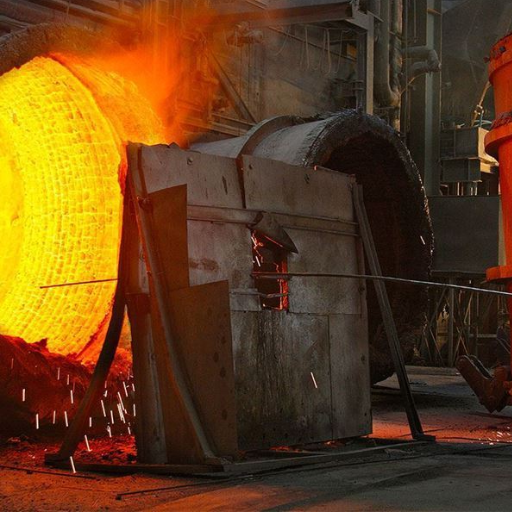
- Overview of Carbon Steel
As its name suggests, this steel has only iron and carbon. It is used extensively in different equipment that requires relative strength, such as construction.
- Alloy Steel
This kind of steel is achieved by complementing it with other metals, such as chromium, nickel, or molybdenum, among other elements, which aim to improve its corrosion resistance, durability, or tensile strength.
- Stainless Steel
Contrary to the other metals which are easily corroded and rust, stainless steel overview
- The application includes kitchen appliances, hospital facilities, and even in construction where metallic materials are used.
- Tool Steel
Tool steel can be branded as a steel type that is used only in the finishing stage of cutting tools and dies. It has very high endurance even after intense wear or mechanical deformation.
- Mild Steel
As another category of low-carbon or plain-carbon steels, it is designed to not crack up and offer easy handling in making various products.
Different Types of Steel
| Type of Steel | Key Properties | Common Applications |
|---|---|---|
| Carbon Steel | High strength, low cost, versatile | Construction, machinery, tools |
| Low Carbon Steel | Ductile, weldable, malleable | Structural components, wires, bolts |
| Medium Carbon Steel | Balanced strength and flexibility | Automotive parts, machinery |
| High Carbon Steel | Hard, strong, less ductile | Cutting tools, high-strength wires |
| Alloy Steel | Enhanced strength, corrosion resistance | Pipelines, auto parts, power generators |
| Stainless Steel | Corrosion-resistant, durable, hygienic | Medical tools, kitchen appliances, piping |
| Tool Steel | Heat-resistant, durable, hard | Cutting tools, industrial equipment |
Carbon Steel vs. Alloy Steel
| Parameter | Carbon Steel | Alloy Steel |
|---|---|---|
| Composition | Iron, carbon, minimal other elements | Iron, carbon, plus alloying elements |
| Carbon Content | Up to 2% | Varies, often combined with alloys |
| Strength | Moderate to high | Enhanced strength with alloying |
| Ductility | High | Varies with alloy composition |
| Corrosion Resistance | Low | Improved with specific alloys |
| Weldability | Excellent (low carbon types) | Depends on alloy content |
| Machinability | Good | Moderate to good |
| Cost | Generally cheaper | More expensive due to alloys |
| Applications | Construction, tools, machinery | Auto parts, pipelines, heavy industries |
Specialty Steels and Their Uses
Specifically engineered specialty steels are specially designed to fulfill certain properties and functionalities for some particular purposes. Such steels have increased chemical and mechanical properties due to the inclusion and modification of different elements and the processing of supplementation of other elements or processes to improve the enhancement or increase of strengths, toughening, and resistance to corrosion and heat-induced conditions. The following are the five basic types of steel used and their respective uses:
- Stainless steel
- Chemical content: Some have a high chromium content (10.5% or more), and some may also contain nickel or molybdenum.
- Characteristics: High rust and corrosion resistance and high strength and toughness.
- Industries:
- Household products: cooking utensils and tableware
- Healthcare: medical devices, such as surgical instruments
- Motive industry: automobile parts
- Construction industry: building exteriors and other structures
- Tool steel:
- Chemical content: High levels of Carbon, along with additional alloying elements like tungsten, molybdenum, chromium or vanadium.
- Characteristics: High level of hardness and abrasiveness along with the ability to maintain the edges for prolonged time under high temperatures.
- Industries:
- To make tools like chamfer tools
- To form and manufacture plastics and metals using molding
- To manufacture punching dies and form box dies
- High speed steels (H.S.S.)
- Chemical content: Contains elements like tungsten, molybdenum, cobalt and chromium
- Characteristics: Hardness is sustained at high temperature levels, making them conducive for fast cutting instrumentation.
- Industries:
- Sawing tools
- Various cutting tools and metals such as knives, drill bits, lathe tools and milling cutters
- Accessories for Powered Tools
- Allys steel
- Composition: This type of steel contains other elements, mostly manganese, silicon, nickel, chromium, and vanadium.
- Properties: Their mechanical properties, for instance, tensile strength, toughness, and wear and fatigue resistance, are enhanced.
- Applications:
- Car gears risks, branches and shafts
- Aircraft parts
- Pipes and pressure containers.
- Maraging Steel
- Composition: Contains large amounts of nickel accompanied by cobalt, molybdenum and even titanium.
- Properties: Powerful. Extremely tough and challenging to spread brittle fractures.
- Applications:
- Air and launch vehicles
- Sports equipment that are very strong (golfsticks)
- Moulds frames for plastic injection
These alloys occupy a crucial position in most sectors, from households to industrial practices. They offer bespoke materials and structures that help meet exigent performance requirements, making these alloys unavoidable across all appliances of everyday life and advanced technology.
Steel Production Process
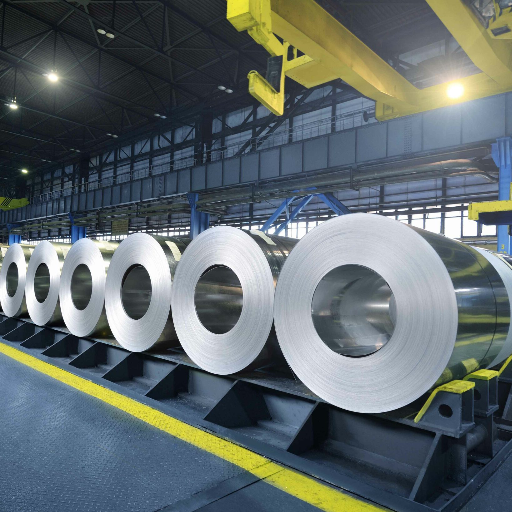
Steel production in itself takes raw materials and three phases, which will eventually transform all the raw materials into high-quality steel products in the market:
- Iron Making: The process of iron making in the steel industry involves extracting iron from iron ore in a blast furnace. Iron ore is placed inside the furnace, where it is burned in the presence of coke (high carbon) and calcium carbonate, resulting in hot liquid iron or pig iron.
- Steel manufacture: Molded iron, however, is converted to steel. This steelmaking process is conducted in the basic oxygen furnace (BOF), where oxygen is blown inside to remove foreign elements, or the electric arc furnace (EAF), which adds scrap steel and sometimes other alloys to achieve certain desired outcomes.
- Shaping and Surface Processing—Steel is processed into different shapes and sizes through rolling mills, forging, or casting operations. This step may include additional procedures, such as annealing, galvanizing, or coatings, to improve strength, durability, and even resistance to corrosion.
Here is how the plant aims to efficiently and effectively produce steel for the cascades of industries based on consumers’ desires.
How Steel is Produced
An understanding of how steel is constructed is a complex one. The process begins by charging raw materials such as iron ore, coke and limestone into a blast furnace that melts them into hot liquid iron. Afterwards, the hot molten iron from the blast furnace goes into a different vessel converting it or alloying so as to meet specific requirements such as de-carbonizing the excess carbon found in it which might not be healthy or positive to an end product; this is where the production of ajon or any other perfect finished product comes in. Lastly, the formed or cast steel is rolled, forged or cast, with or without the inclusion of certain processes for the steel, to extend its service; maintain its plasticity and hardness, or any additional performance intended activities. This procedure facilitates that the steel’s properties follow context of use.
Innovations in Steel Manufacturing
The steel industry has undergone many changes in the last few decades, thanks to technology and various other factors such as environmental sustainability and society’s demand for efficiency. N one of these developments is the introduction of the electric arc furnace (EAF) technology that helps companies recycle steel scrap into good quality products while lowering the CO₂ emissions considerably. A report by the World Steel Association in 2018 states that the emission of CO₂ by an EAF is almost 60% less compared to that of the conventional blast furnace, which illustrates a much cleaner approach to steel-making.
The application of artificial intelligence and machine learning is another major development reviewed in the steel-making process changes. The technological interventions are geared towards the operation and maintenance optimization of the production plants and quality function assurance. Considering the machines’ condition and maintenance level will allow the user to know when to do any upgrades on the EAM, reducing delays during the work and increasing efficiency. According to McKinsey, the use of AI in steel plants is reported to decrease expected maintenance expenditure by almost 20% and enhance production by up to 10%.
Moreover, there has been significant progress in hydrogen-based steelmaking. This method uses hydrogen instead of carbon-based reducing elements such as coal; the resultant emission is water vapor, not carbon dioxide. Some corporations, such as ArcelorMittal and SSAB, are at the forefront in rolling out green hydrogen for steel making, to make steel without using any fossil fuel, which is in harmony with the ongoing international drive to reduce emissions across different sectors. Take, for example, SSAB’s uniqueness in pursuing the whole ‘carbon-free steel’ production by 2045 under the HYBRIT project.
Another aspect of innovation influencing steel is the metallic properties and the changes in the uses. Manufacturers in the automotive and construction industries have advanced high-stress steels (AHSS) being developed for their production. Besides being lighter, these steels are also sturdier, so they can be used in vehicle manufacture to minimize weight, thereby reducing fuel consumption and maintaining the safety of the passengers. Offering a growth rate of authentic 7.5% per annum, the global advanced high-strength steel (AHSS) market research forecast revenue to hike to 44 billion USD by the year 2027.
There have also been advancements in the field of carbon capture and storage, or CCS, and this technology is now being considered for incorporation in plants producing steel. Monolithic developments corresponding to the challenges of steel production include, among others, the urban blast furnaces of the Ultra-Low CO2 steelmaking (ULCOS) design, from the European Commission, likely to capture and use effluent gases resulting from their operation, lessening the structures’ environmental impact.
These advances represent a complete rethinking in the metal sector, where path-lib tradeoffs confront the imposed standard of high-quality production and environmental load minimization. Steel manufacturing is heading for further investments in green technologies, AI control, and the amelioration of materials for the fast growth of the new world.
Environmental Impact of Steel Production
| Parameter | Impact |
|---|---|
| Carbon Emissions | Contributes 7% of global CO2 emissions |
| Energy Use | High energy consumption in production |
| Air Pollution | Releases particulate matter, heavy metals |
| Water Pollution | Contaminates water with toxic byproducts |
| Deforestation | Mining causes habitat destruction |
| Recyclability | 100% recyclable, reduces waste[ |
| Innovations | Hydrogen-based methods reduce emissions |
| Health Impact | Linked to respiratory and cancer risks |
Applications of Steel

Increasing use of steel may be attributed to its features, such as strength, hardness, and ability to be remade. Hence, the material is most suitable for framework backing for either construction work or any other concrete structure, bridges, infrastructure structure, or gateways. In case of fabrication, it is especially relevant as the most essential part of their existence, the production of machine tools and equipment, where they put more Fisher steel than anywhere else. Also, car bodies are supported by steel since the body of vehicles, especially protective parts, is made primarily from this metal. Also, energy generated by plants, pipes, turbines, thick foil, etc, is a functional area of steel overview. Steel will always be in demand for industrial and domestic purposes such as cooking utensils, food-contained tetsivo pack, and even medical field equipment.
Use of Steel in Construction
Steel, in the construction industry, is an excellent resource for construction due to its strength, durability, and flexibility. With the introduction of modern buildings, construction is an essential human endeavor that relies on structural steel in most applications. By recent statistics, the level of consumption of structural steel on a global scale has been increasing due to the increased urbanization and annual infrastructure growth. For example, in 2022, the World Steel Association indicates that approximately 1.9 billion tons of crude steel were produced, with a significant amount going into construction.
One of the foremost benefits of steel in construction is the ability of steel to carry more weight within more extended building frames or bridges. In regions susceptible to natural disasters, steel’s high ductility and resistance to the effects of earthquakes and wind make it a primary choice of material. In particular, the development of fabrication techniques has made steel more economical and functional; steel components can be pre-fabricated so that they only need to be assembled, facilitating construction and incurring less cost.
In addition to timelessness, the growing concern for sustainability has propped up the increasing use of building structures composed of steel. Steel contributes to the rise in popularity of construction because it can be reused repeatedly, since every World Steel Association record shows that approximately 630 million tons were recycled in 2022. This has diminished the utilization of resources and the adverse effects associated with it. High-performance steels, like low-alloy steels, also enhance the efficiency of the material in that they offer superior quality with little material used.
Steel is also an essential part of green building. With the advancement of steel technology, it is possible to combine steel with thermally efficient materials to promote green building. For example, energy-saving steel frames help increase the insulating effect within walls, resulting in lower air conditioning in offices and homes. Versatile, durable, and sustainable, steel is still the most relevant material known to architecture and engineering.
Steel in Automotive and Aerospace Industries
| Parameter | Automotive Industry | Aerospace Industry |
|---|---|---|
| Primary Use | Vehicle frames, safety structures | Fuselage, landing gear, engine parts |
| Material Strength | High strength for crash safety | Ultra-high strength for durability |
| Weight Reduction | Advanced steels reduce vehicle weight | Lightweight designs for fuel efficiency |
| Corrosion Resistance | Coated steels for durability | Specialized alloys for harsh environments |
| Cost Efficiency | Affordable compared to alternatives | Cost-effective for critical components |
| Recyclability | 100% recyclable, reduces lifecycle impact | Recyclable, supports sustainability goals |
| Innovation | Advanced High-Strength Steels (AHSS) | Martensitic steels, nano-particle enhancements |
| Environmental Impact | Reduces emissions via lightweighting | Energy-intensive production, mitigated by recycling |
Future Trends in Steel Applications
The existing order of things, in the steel business, is disrupted every once in a while. With so many dynamics in the equation, below are five obvious futuristic challenges the steel manufacturing sector is likely to encounter. b
- High-Tune Advanced High-Strength Steels for Vehicle Lightweighting Purposes
Based on their effective history, AHSS is being improved to find a cheaper and better solution to achieve lightweighting without compromising the vehicle’s safety. The automotive industry’s advanced approach projects that more than a quarter of a vehicle’s structure will be made of about 25% advanced high-strength steel to be fuel efficient and environmentally friendly.
- The Hydrogen Revolution in Steel Manufacturing
Perhaps the most exciting development trend in the industry is the move to the use of hydrogen in the production of steel, which offers more than the conventional processes of steelmaking in terms of reduced carbon emissions. This reduction would be made possible by replacing the existing technology with more hydrogen fuel-efficient methods, cutting down greenhouse gases released from steel factory processes by up to ninety percent or more following the restriction on deforestation.
- Building Steel-based Renewable Energy Infrastructure
More and more factors are pushing towards the need to adopt renewable energy systems, and while this is the case, steel will play a huge role in creating the wind turbine, the structure of a solar panel, and even a hydroelectric plant. Such structures for wind turbines are already in use, reducing maintenance of the towers made of high-strength, anti-corrosive steel and extending the service life of the company.
- Steel Using Smart Technology
The advent of smart steel ore, or simply steel integrated with sensors and connected devices, is a new trend that seems to be gaining popularity by the minute. Such elements include those capable of registering stress, temperature, and wear in the moment, addressing the maintenance issues before they reach critical levels and further improving the safety and performance of buildings, bridges, and other industrial structures.
- Eco-Friendly Usable Steels
Finding itself in an age where sustainability is very modern again, the industry is instead even more constructive in producing steel elements that can be recycled entirely. The global average recovery rates of steel products is approximately 85%. Due to the improved processing methods, it is possible to produce high-quality steels without using up too much energy.
These various innovations are targeted at broadening the material’s uses and also planning how it can be incorporated into industries in a manner that considers the higher requirements of sustainability, performance, and technology.
Challenges in the Steel Industry
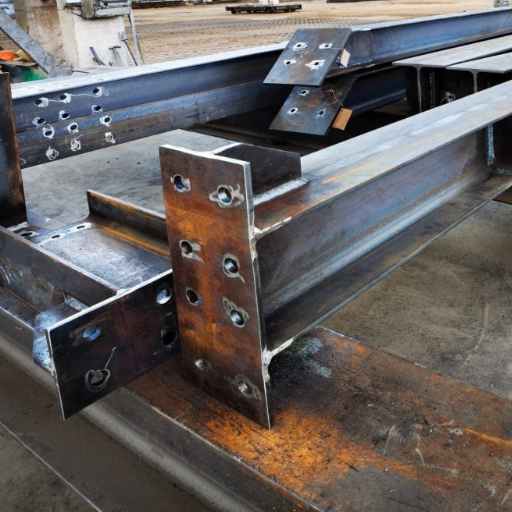
Globally, the steel industry overview is subject to conflicting factors that impair its sustainability and profitability. Firstly, excessive carbon emission from steel-making enhances adverse effects on the climate while encouraging ever-increasing regulations. Secondly, the challenge of fluctuating prices and availability of various raw materials contributes to unstable production and uneven prices. In addition, the global market pressures necessitate continuous innovation to sustain the company’s competitiveness. Finally, in terms of leaning towards green processes, there is a considerable amount of capital and many technological advancements that should be used for manufacturing and quality control.
Steel Rust and Corrosion Issues
| Key Point | Details |
|---|---|
| Definition | Rust is iron oxide formed by steel reacting with oxygen and moisture. |
| Causes | Moisture, oxygen, salts, acids, and high humidity accelerate corrosion. |
| Types of Corrosion | Uniform, pitting, crevice, galvanic, and stress corrosion cracking. |
| Impact on Structures | Weakens steel, reduces lifespan, increases maintenance costs. |
| Prevention Methods | Protective coatings, galvanization, inhibitors, and cathodic protection. |
| Material Selection | Use stainless steel or corrosion-resistant alloys for durability. |
| Environmental Factors | High humidity, temperature, and pollution increase corrosion risk. |
| Maintenance | Regular inspections, cleaning, and re-coating extend steel lifespan. |
| Economic Impact | Corrosion costs industries trillions annually in repairs and replacements. |
Market Trends and Economic Factors
The construction of human society continues with alterations of the steel construction industry due to various factors in the market and the economy. Below are five such major trends of the sector growth:
- Overview of the Global Steel Demand
- The growing steel demand for the emerging markets can be attributed to the drastic industrialization and urbanization processes in the Asian region in particular.
- The World Steel Association anticipates that global steel demand will increase by 2.3 percent in the next year, backed by construction and infrastructural investments.
- Moving Towards Green Steel Production
- Just as there is an urge to be more responsible for what humans do than ever before, so too it will be with the investments of most companies in low-carbon or green steel metals.
- Such measures call for implementing strategies that ensure sustainability and effectiveness in meeting the controls such as without emissions.
- Supply Chain Interruptions
- Freight delays in the shipping sector and sourcing issues are some of the problems in the global supply chain that delay production and have access to products during that wait time.
- For example, so much has been said about steel companies operating in areas with port bottlenecks experiencing a rise in logistics costs by between 10 and 15 percent.
- Variations In Prices Of Raw Materials
- Volatile price of basic production materials such as iron ore and coking coal threatens profit margins.
- Iron ore prices have risen by 25 percent in this first quarter due to shortages from Australian and Brazilian producers.
- Impact of Geopolitical Tensions
- Issues such as trade Wars among countries, taxes on goods and services, and geopolitical issues can also change the inner workings of steel markets.
- One example is the import tariff that the US set on Chinese steel products, which has disrupted supply chains and reoriented markets worldwide.
All these factors highlight the evolution of the steel industry, emphasizing that adjustment and creative thinking are the rules that define success in the long run.
Recycling and Sustainability in Steel Production
The modern-day production of steel has significantly emphasized recycling and ensuring sustainability. Here are Met five reasons why recycling and sustainability play a role in the steel industry:
- Recovered Steel
- Steel is one of the world’s most recyclable materials with more than 85% global recycling.
- The ease of recovery of steel underlines its increased efficiency for recycling because of its magnetic characteristics.
- Economical Benefits
- Recycling steel ensures a reduction of energy – the energy required in the manufacturing of primary steel has been reduced by about 60-74% by using scrap steel as a raw material.
- This implies that this form of energy diminishes the amount of greenhouse gases emitted and conforms with the worldwide climate change requirements.
- Emission of Carbon Dioxide IsLowered
- Recycled steel offers a 58% decrease in CO₂ emissions compared to the manufacture of new steel.
- Since steel has a carbon footprint, recycling one ton of steel will prevent approximately 1,500 kg of carbon dioxide, which is extremely efficient and a very important measure towards fighting climate change selfishly.
- Preservation of Natural Resources
- Steel recycling reduces the demand for raw materials like iron ore, coal, and limestone.
- 1 ton of steel saves about 1,400 lbs of iron ore, 740 lbs of coal and 120 lbs of limestone.
- Efforts Towards a Circular Economy
- Because steel can be recycled, it fits squarely within the aspiration of a circular economy in which products remain in circulation for the longest duration and waste generation is irrelevant.
- Old and recycled steel is always as good as freshly made steel in terms of both quality and strength.
Therefore, it becomes quite useful in things like building construction, vehicle manufacturing, or the making of goods. These fundamental ways of handling steel overview already existing hardships by furthering recycling and sustainability in the production of steel, augmented the industry’s benefit by looking into the future.
References
- ScienceDirect – Steel Research
Steel Research – an overview | ScienceDirect Topics
This source includes academic papers and reviews on steel research, covering journals like the Journal of Constructional Steel Research and others. - World Steel Association – The Steel Story
The Steel Story
A comprehensive resource from the World Steel Association, detailing the history, innovations, and developments in the steel industry. - ResearchGate – Sustainability of the Steel Industry
Sustainability of the Steel Industry: A Systematic Review
This paper discusses technological advancements and sustainability in the steel industry.
Frequently Asked Questions (FAQ)
What are the different types of steel made for various applications?
There are many types of steel, each designed for specific functions. Common types include stainless steel, which is resistant to corrosion; carbon steel, known for its strength; and tool steel, used for making tools that require high hardness. Each type is characterized by its unique properties and chemical composition, making it suitable for different construction, manufacturing, and other uses.
How is steel produced using iron ore?
Steel production begins with iron ore, which is processed in a blast furnace or an electric arc furnace. Iron ore is combined with coke and limestone in a blast furnace, then heated to produce molten iron. In an electric arc furnace, scrap steel is melted down. This molten steel is then further refined to achieve the desired carbon content and mechanical properties, resulting in different steel grades.
What are the characteristics of steel that make it a preferred construction material?
Steel is known for its exceptional strength, durability, and versatility. Its characteristics include high tensile strength, resistance to deformation, and ability to withstand high loads. These unique properties make it an ideal material for steel structures, bridges, and buildings, ensuring safety and longevity.
What is the significance of steel grades in manufacturing?
Steel grades are essential as they define a steel product’s specific properties and applications. Different grades of steel indicate variations in carbon content, alloying elements, and mechanical properties. Understanding steel grades helps manufacturers select the right type of steel for construction, automotive, or machinery applications.
How does recycled steel contribute to the production of steel?
Recycled steel plays a crucial role in the modern steel industry. It is produced from scrap steel, which is melted down and reformed into new steel products. This process conserves natural resources and reduces energy consumption and greenhouse gas emissions, making it an environmentally friendly option in steel production.
What are the typical applications of stainless steel?
Stainless steel is widely used in various applications due to its resistance to corrosion and staining. It is commonly found in kitchen appliances, medical instruments, and construction materials. The unique properties of stainless steel make it suitable for both aesthetic and functional uses, particularly in environments where cleanliness and hygiene are paramount.
What is the difference between high-carbon steel and low-carbon steel?
High-carbon steel typically contains a higher percentage of carbon, increasing its hardness and strength, making it ideal for tools and wear-resistant applications. Conversely, low-carbon steel has less carbon content, resulting in greater ductility and malleability, making it suitable for structural applications where flexibility is needed.
How has the production of steel evolved?
Steel production has a rich history, evolving from traditional methods like Wootz steel and crucible steel to modern techniques involving electric arc furnaces and blast furnaces. Innovations in technology and processes have allowed steel producers to produce steel in large quantities, enhancing efficiency and quality while meeting the growing global demand for steel.

